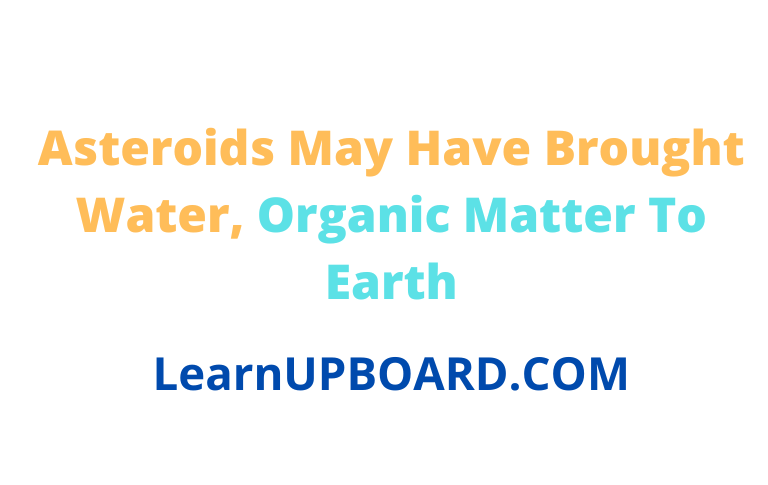Asteroids May Have Brought Water, Organic Matter To Earth
Asteroids that came from the solar system’s outskirts more than 4.5 billion kilometres distant may have carried water and organic materials to the ancient Earth, according to a team of Japanese researchers.
The Japan Aerospace Exploration Agency and colleagues published the theory in the scientific journal Nature Astronomy based on a study of samples from the Ryugu asteroid acquired by the Hayabusa2 space mission.
It is still unknown how the Earth, which was formed almost completely of molten lava, came to be covered with water.

“It is plausible that small celestial bodies transported substances that led to water and life on Earth,” Motoo Ito, senior researcher of geomaterials science at the Japan Agency for Marine-Earth Science and Technology, stated.
Hayabusa2’s six-year mission brought more than 5.4 kilos of surface debris to Earth from the Ryugu asteroid, situated over 300 million kilometres distant, in December 2020.
While Ryugu particles had a near chemical match to Earth’s water, there were some minor discrepancies that led experts to speculate that Earth may have gotten its water from sources other than asteroids.
An analysis of eight particles from the Ryugu asteroid, totaling approximately 59 milligrammes, discovered organic matter and water not in liquid form, but a hydroxyl group consisting of one oxygen atom bonded to one hydrogen atom, with a composition similar to that of water found in cosmic dust and comets.
They were thought to have survived hard environmental changes after leaving the outer solar system, where water and organic matter are prevalent, since they were protected by a “cradle” of phyllosilicates.
Organic regions made mostly of aliphatic hydrocarbons were also discovered among the comparatively coarse-grained phyllosilicates. The surrounding coarse grains, which are more resistant to heat, may have prevented the environment from altering water and organic materials.
Hayabusa2 launched in 2014 and arrived in June 2018 over Ryugu after travelling 3.2 billion kilometres in an elliptical orbit around the Sun for more than three years.
The probe returned to the asteroid again the following year, gathering the first-ever asteroid subsurface samples.
Researchers earlier discovered that Ryugu, produced from an outer solar system parent body, migrated to the inner solar system and that its particles include amino acids – organic chemicals thought to be the “source of life.”
